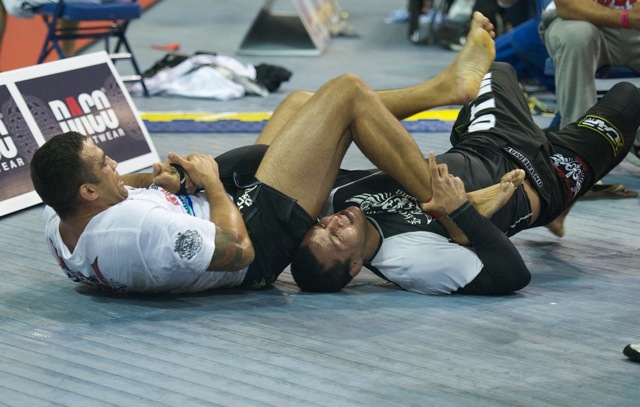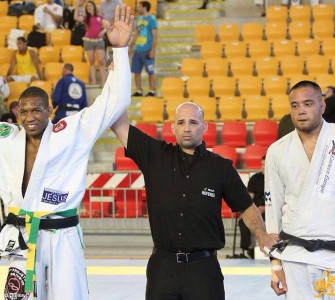MMA competitors often tough out submissions for much longer than their BJJ counterparts. This is especially apparent with things like leg locks, where the elite grapplers sometimes tap before the sub is even applied, and with arm bars, where horror inducing, joint popping escapes are far more common in the cage. Why this difference? It’s all about risk and reward.
There are both a chronic and acute risks from submissions. Arm bars give good examples of both of these, and cage fighters frequently hang on to these for much longer before tapping. There are differences in terms of the chronic damage, as MMA fighters might compete once every couple of months, while jiu-jitero sometimes compete at triple that rate, or more, and people tend to compete in BJJ till much later in life than mixed martial arts. Each of those joint attacks add up, and eventually something is going to give. With comparatively few joint attacks, a mixed martial artist might be able to get away with holding out for a while, whereas an active BJJ competitor who holds off submissions unnecessarily long may soon find themselves in a bad way. If you want to keep training and competing, tapping early and often is a necessity.
As for the acute risks? I don’t actually mean the danger of bones breaking, as that’s a danger that affects both types of fighter equally. Consider instead the reward: money wise, there’s usually far more on the line in MMA bouts, or at least shows in general, whatever the sport. Tapping might cost you a great deal financially, and perhaps a greater motivation than that is the prestige. To loose stock, glory, or even a belt, because you weren’t prepared to grit out a bit if pain is a sad thing. I expect this is why Gordon Ryan was so prepared to hold off tapping to Craig Jones at EBI 14; Gordon does need to look after his body if he wants to compete in years to come, but a combination of money and renown made holding off that arm bar more than worth it.
For most of us, tapping early and tapping often is the way forwards. You may need to ask yourself what you’re training for. If it’s health, consider why you would bother holding off a submission for that long. And if it’s fitness, you may want to do a little more cross training, do some yoga to correct imbalances, or lifting smart to help maintain your joints. If it’s fun, then is it really worth risking that much joint damage? If you’re training for competition, you may need to train that much harder, but there’s still a balance to be found with heavy and light training sessions. If there’s something big on the line, then maybe it is worth taking a bit of damage for, but the important thing is knowing when that is. It all depends what you’re trying to get out of it, and what you’re prepared to give.
Please check out the rest of my blogs at thoughtsonfighting.wordpress.com Comments are on at this site, so give me some feedback, let me know what you thought, and tell me what you would like a blog post about next.
If you want to be un-submitable, you need to check out Tom DeBlass’ “Submission Escapes” BJJ 3 volume BJJ instructional from BJJFanatics.com . In this series, he shares multiple escapes from all of the hardest to escape positions. Soon your training partners and opponents will be calling you Houdini.


















